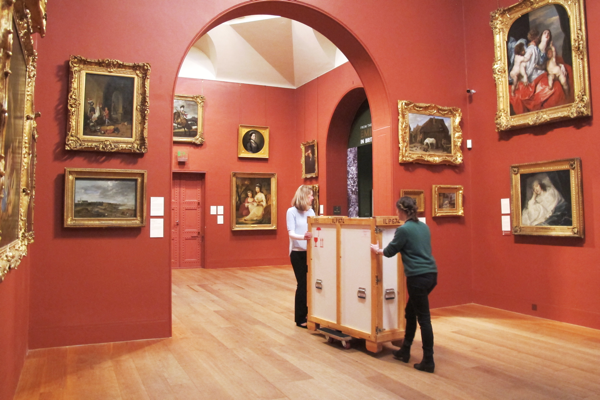
A fake painting in an art museum isn’t usually desirable. But in Doug Fishbone’s latest project Made in China—hosted by the Dulwich Picture Gallery in South London—it’s the linchpin of a months-long conceptual investigation into aura, institutional authority, and the highly-codified ritual of the museum visit.
The American-born, London-based artist commissioned a replica of one of the many Old Masters artworks in the Dulwich Picture Gallery’s collection, which features pieces by Rubens, Titian, and Gainsborough, among others. Executed by Xiamen, a China-based company specialized in oil painting, the copy will be swapped in for the original and hang in its place from February 3 to July 26, 2015. Members of the public will be invited to guess which painting isn’t the real deal.
“This is a quiet project, but it raises all sorts of broader questions: how do we interact with culture in our institutions; what does the exhibition context bestow on an object?” Fishbone told artnet News.
“I’m hoping that it will encourage people to look with much greater focus and with a heightened sense of awareness at the actual artworks,” he adds. “When you walk into a collection with a large amount of paintings, it’s very easy to gloss over everything quickly and to take it all in as a kind of vista.”
While operating with characteristic good humor, Fishbone nonetheless touches a sore point for museums worldwide. “We are not trying to pull a little stunt,” he insists.
Doug Fishbone
Photo: Karen Russo
Swapping an original with a fake is a technique often used by thieves hoping to delay the discovery of their misdeed. The highly-publicized story of Henri Matisse’s Odalisque in Red Pants, stolen and replaced by a copy, which hung unsuspected for months at the Museo de Arte Contemporaneo de Caracas Sofia Imber in Venezuela is a case in point (see “A Stolen Matisse and Its Forgery Share Top Billing in Venezuela”). In two recently uncovered cases, museum staffs have even been accused of commissioning the fake artworks (see “Museum Staff Replaced Collection with Forgeries, Then Sold Originals” and “$250 Million Turkish Museum Heist Was an Inside Job“)
Even if so very many reports about fake artworks circulating on the secondary market are dubious, they are yet deeply troubling to the museum world, often the client of major auction houses (see “Over 50 Percent of Art is Fake” and “50 Percent Art Forgery Estimate May Be Exaggerated. . . . Duh“). Scholars and experts will discuss some of these issues in talks and events organized at Dulwich Picture Gallery, to coincide with Made in China.
“Made in China” follows one of Fishbone’s lines of investigation into the power of context in an age of accelerated globalization. In the feature film Elmina, perhaps his most famous recent work, the artist cast himself as the lead character in an all-African movie production—which unfolded oblivious of the fact that the hero, meant to be a Ghanaian villager, was a white New Yorker. In another of Fishbone’s pieces, the artist dumped 30,000 bananas in Trafalgar Square.
“It’s the idea of inserting something in a context and seeing what that opens up,” he explains.
The title of the fake painting will be revealed next April.
For more artnet News stories about art in the United Kingdom, see Fake Malevich Works in Tate Blockbuster? and Convicted Forger Gets a Solo Show of Obvious Fakes.